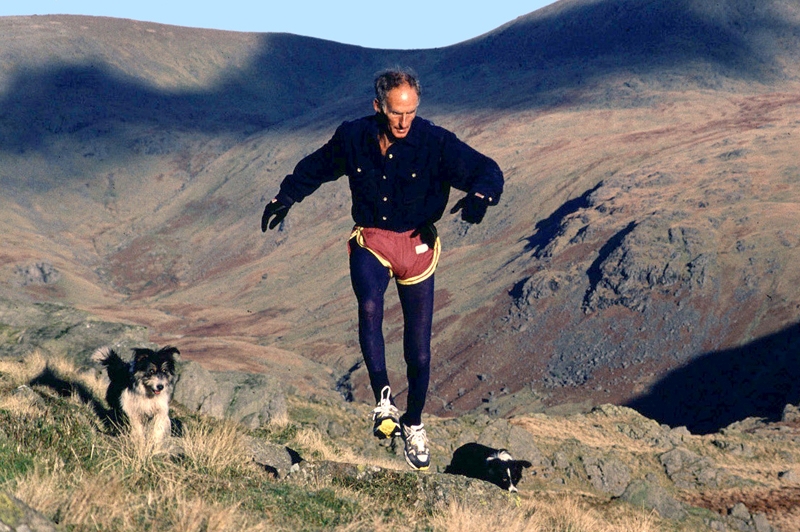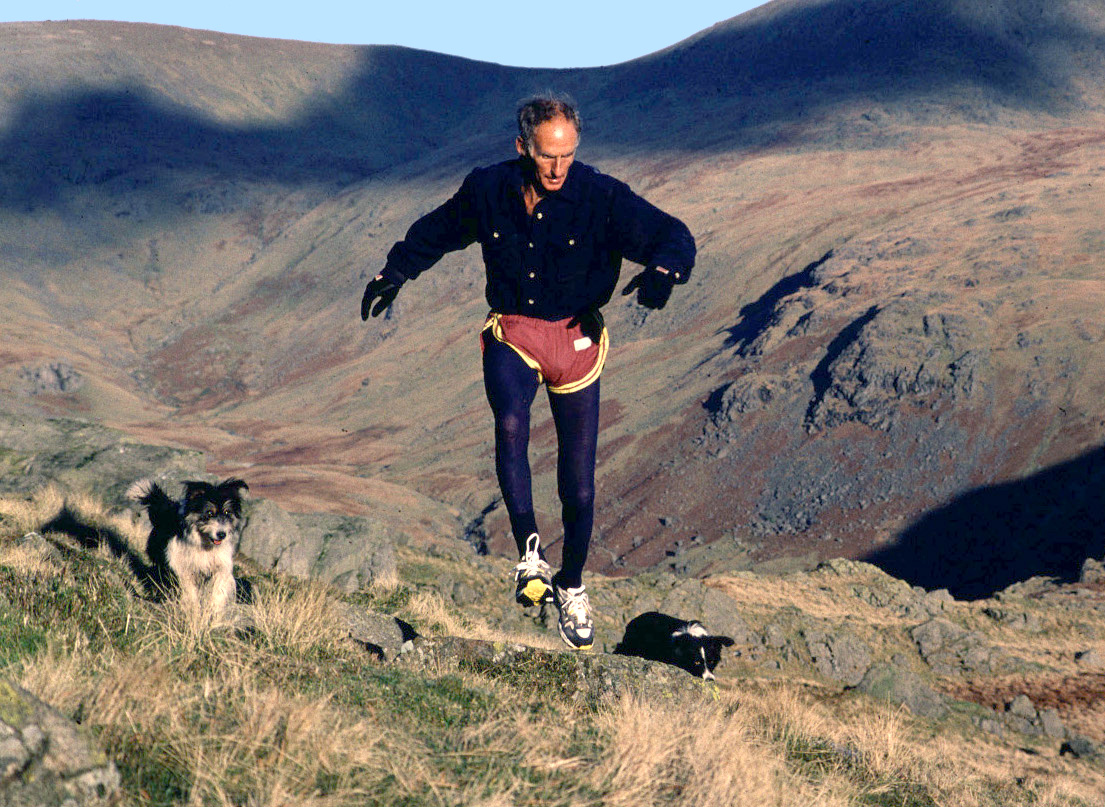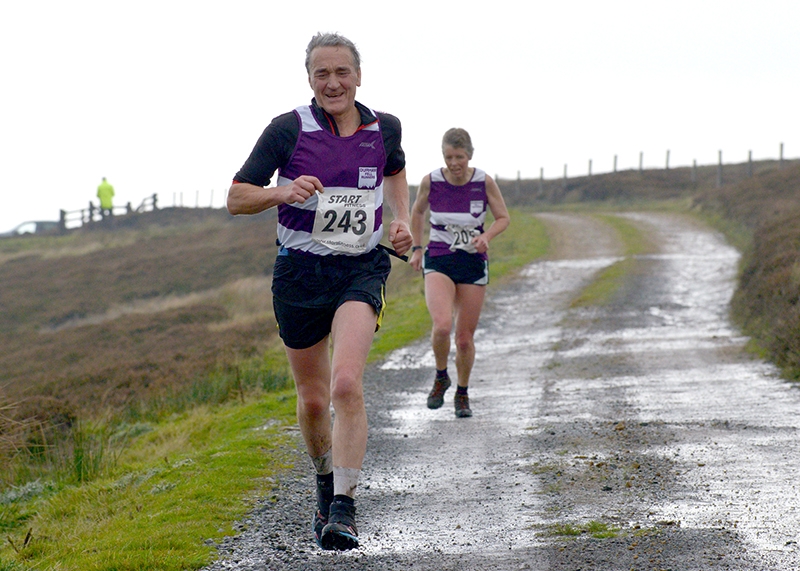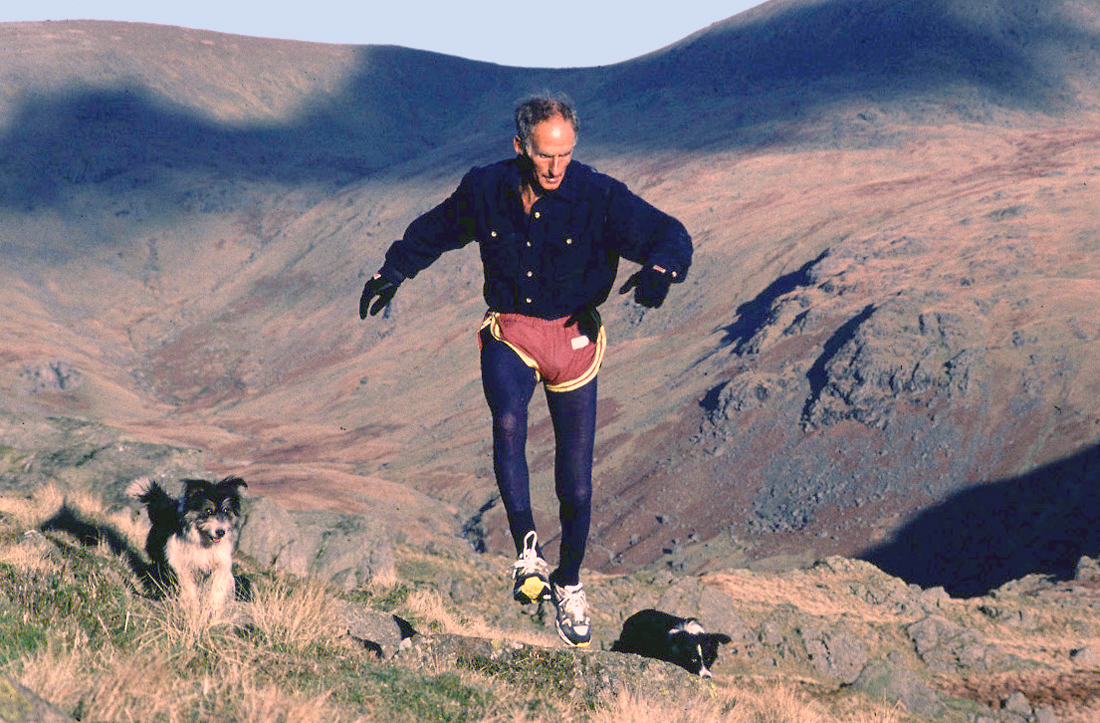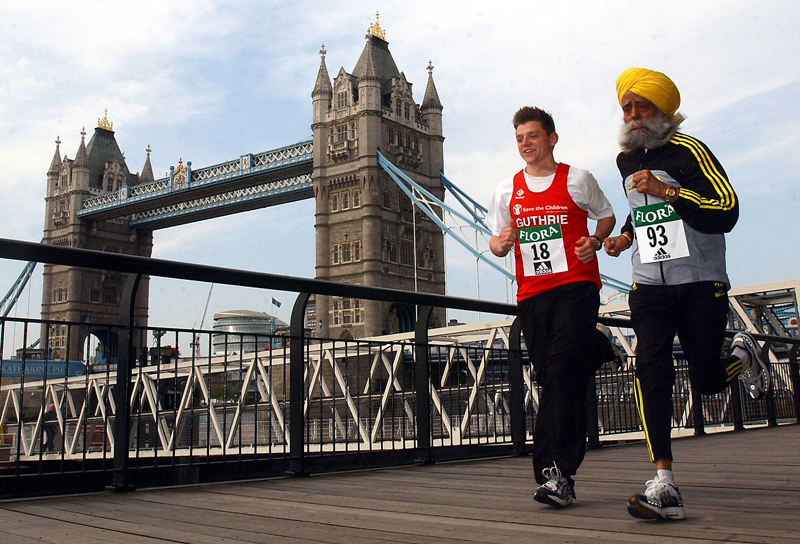You are viewing 1 of your 1 free articles. For unlimited access take a risk-free trial
Holding back the years: getting older, getting faster!

In the first of this two-part article, Andrew Hamilton explored how the ageing process can affect endurance performance. In this second part, Andrew looks at evidence-based strategies that older endurance athletes can employ to maintain and even increase performance levels over time…
In part one of this article (which you can read here), we examined the physiology of ageing and endurance and how training might be able to offset the normal age-related decline observed among those who are sedentary. An obvious question therefore is whether endurance athletes such as cyclists, runners, swimmers and triathletes can train to ensure performance is optimised and even improved as the years tick by? The answer to that is a resounding yes. Studies show that the body responds to resistance and endurance training in a similar fashion, regardless of the age at which a training programme commences.In a 1993 study in the Journal of Ageing, researchers looked at the effects of a moderate-intensity endurance training program in fifty 60 to 72-year-old men and women(1). The subjects trained for approximately 45 minutes per day, four times a week for one year. Compared to a control group who didn’t exercise, the ‘training group’ improved their maximum oxygen uptake by a very considerable 21-24%. These findings are consistent with those found in subsequent studies on older adults commencing endurance training.
Of course, this is not to say that for example that an older cyclist with no previous history of cycling can attain the same cycling fitness level as someone who has ridden competitively from a young age – remember that high levels of fitness developed in your peak years can be largely maintained into middle age providing training continues. Also, endurance athletes such as runners and cyclists returning to the sport after a long layout often find they make more rapid fitness gains than those starting from scratch; this may be related to a phenomenon known as ‘muscle memory’, where it seems that intense training can induce permanent physiological changes in muscle cells. These changes appear to help the muscles adapt more rapidly to subsequent training loads, even if training is resumed years or decades later.
Other reasons to be cheerful
If you’re an older cyclist or runner trying to maintain or even improve performance, there are other factors that can work in your favour. For instance, with a few years of training experience under the belt, older athletes are more likely to train ‘intelligently’ – ie adopting a more scientific approach using a structured and focused training programme (rather than simply bashing out the miles) and employ nutritional strategies to maximise performance and recovery. Older athletes also tend to be better at understanding their own responses to training (for example, the fact that they are likely to take longer to recover after hard bouts of training), and adapting a training programme to suit their body rather than blindly following a ‘one size fits all’ approach.Middle age myth

Most of us have heard the term ‘middle-aged spread’, and looking at the statistics on age and bodyweight, it’s natural to assume that there must be an underlying age-related process responsible for the expanding waistlines as the years tick by. But is there any evidence this is the case? It’s true that there are some fundamental age-related changes taking place that make weight (body fat) gain somewhat more likely. One example is the change in levels of the hormone testosterone that occurs naturally during middle age in men. Testosterone is a powerful ‘anabolic’ hormone; as well as being involved in sex drive, it also encourages the development and retention of muscle mass.
That’s important because your basal metabolic rate (the rate at which you burn calories while at rest) is a function of your lean muscle mass, and more muscle mass means a faster ‘tick-over’ calorie burn. In addition, lower levels of testosterone in men are often associated with reduced energy levels. Put these factors together - lower energy levels leading to reduced physical activity, and lower muscle mass leading to a slower rate basal metabolic rate – and it’s easy to see why fat gain could be more likely.
Having said all that, there’s absolutely no inevitability about weight gain – witness the thousands of middle-aged cyclists and runners who ditch the TV remote for a bike and shed 10s of kilos! The overriding factor in determining whether you stay lean is you lifestyle and diet. Regardless of any hormonal changes an athlete who eats healthily and trains vigorously is NOT suddenly going to develop middle-aged spread. Moreover, any tendency to lose muscle mass can easily be offset with the right kind of resistance training. Indeed, it is perfectly possible to become the leanest and fittest you have ever been during and after middle age!
Developing an action plan
If you continue to train, all the evidence suggests that you will maintain much of your endurance fitness as the years pass. However, by training intelligently and using the correct nutrition strategy, you may well find that you can actually improve your performance, rather than just hang onto it! In terms of a strategy to maximise your capabilities as an older athlete, you need to consider the following:- *Optimising your endurance training - to minimise the decline in maximum aerobic capacity, and to be able to utilise more of your maximum capacity to maintain or even increase performance;
- *Performing strength training - to combat and reverse the decline in muscle mass that occurs during ageing;
- *Ensuring the right kind of nutrition - to support training, recovery and maintain strength.
*Endurance training
Endurance holds up relatively well as you age, which explains why many older cyclists and runners perform relatively well at progressively longer distances as they age. Indeed, switching up to longer race/event distances is one way of maintaining your performance rankings as you get older! However, many older athletes take this as carte blanche to only perform long, slow distance training. The reality however is that due to the larger age-related decline in anaerobic (high-intensity and sprint/power) performance, some higher-intensity training will be essential for maximising performance.One approach that is becoming increasingly popular, and which is supported by a growing number of rigorous scientific studies, is ‘polarised training’. The polarised approach says that actually, moderate-intensity training is rather unproductive for making fitness gains and instead endurance athletes such as runners and cyclists are better to spend a large proportion of their training time working at low intensity (ie in zone 1) and a small proportion at a very high intensity (in zone 3), with very little time spent in the middle zone near to lactate threshold (zone 2) see table 1 below.
Table 1: Polarised training zones
| Zone | AKA | Subjective feel: | Typical blood lactate | Typical heart rate |
1 |
‘Aerobic’, ‘easy’, ‘recovery’, ‘long slow distance’ etc | Easy – you feel like you can keep going and going | Less than 2mmol per litre (mM/L) | Under 80% and typically around 70-75% of maximum |
2 |
‘Threshold training’, ‘intensive endurance’ etc | Moderately hard – hard (you know you’ve had a workout) | Between 2 and 4mmol per litre (mM/L) | Usually around 80-85% of maximum |
3 |
‘Very high intensity’, ‘race pace’ etc | Very, very hard (you won’t want to stay in this zone for long!) | More than 4mmol per litre (mM/L) | Significantly over 85% of maximum |
The reasoning is that polarised training provides an excellent ‘aerobic foundation’ (zone 1) yet allows for high-intensity work (zone 3) that really stimulates training adaptation (ie enabling you to develop more of your potential maximal aerobic fitness) without becoming too tired. The conventional ‘doing most work in zone 2’ approach however means that you could spend most of your time training hard enough to tire you out, but never hard enough to provide the training stimulus your muscles need to make maximum fitness gains. The beauty of a polarised approach for older athletes is that minimising the zone 2 work (which places relatively high demands on recovery), and doing most work in zone 1, with small amounts in zone 3 reduces the recovery demands while maximising fitness gains. It also ensures that the all-important high-intensity zone-3 work isn’t neglected.
*Strength training
Far too many endurance athletes – of all ages - mistakenly believe that strength training leads to performance-sapping gains in bulk, and loss of flexibility. However, a growing body of research suggests that adding strength training into a cycling or running programme can increase not only strength, power and sprinting ability, but also aspects of performance normally associated with endurance. Given that muscle mass and power decreases more far rapidly than endurance with age, including strength training in any programme is vital for any older athlete who is serious about performance!In a 2005 landmark study published in the Journal of Strength and Conditioning Research, 18 road cyclists were assigned to an experimental or control group for five weeks of training(2). The experimental group replaced part of their usual cycling training with twelve 30-minute sessions consisting of three sets of explosive single-leg jumps, alternating with three sets of high-resistance cycling sprints; the control group meanwhile simply maintained their normal cycling training. The results showed that compared to the control group, the riders in the strength/sprinting group showed dramatic increases in power and endurance capacity (see table 2).
Table 2: Performance changes produced by 5 weeks of strength/sprint training |
|
| 1km power | Increased by 8.7% |
| 4km power | Increased by 8.1% |
| Peak power | Increased by 6.8% |
| Power at lactate threshold | Increased by 3.7% |
| Cycling economy | Increased by 3.0% (ie oxygen cost at given workload was 3.0% less) |
Particularly relevant for older cyclists and runners is that the addition of strength training in the above study increased ‘cycling economy’. Cycling (or running) economy refers to how efficient your cycling muscles are at producing force during sub-maximal exercise (ie not flat out). The better the economy of your muscles, the less oxygen you need to use to propel yourself along at a given speed. In the study above, the cyclists improved their cycling economy by 3%, which meant for the same level of oxygen consumption, perceived effort and cycling speed, they needed 3% less oxygen. Less oxygen demand for a given workload means less fatigue, particularly over longer events.
In the last 10 years, a number of other studies on cyclists and runners - male and female, young and old - have confirmed that regular, heavy lower-body strength training does indeed improve muscle economy, with benefits for endurance performance. Moreover, in a study published in the European Journal of Applied Physiology, researchers investigating cycling economy in young and old triathletes found that the older triathletes’ cycling economy was around 11% lower than the younger triathletes(3). In other words, given muscle economy falls as you age, performing strength training is even more important in helping to maintain endurance performance.
One important factor to bear in mind however is that strength training should not be added in a way that pushes you into an exhausted or overtrained state, because it could become excessively fatiguing and counterproductive. In other words, if your training routine is pushing you near to the limit already, you need to replace or shorten a couple of your endurance sessions before adding strength sessions to ensure that your overall workload isn’t increased. The panel below sets out some general training principles for older endurance athletes such as runners and cyclists.
Strength training programme principles for older endurance athletes
- Choose 4-5 lower body strength exercises that involve the key cycling muscles (eg squats, single and double leg press, lunges, glute machine, calf raises etc.);
- Sets should consist of fairly high intensity, low volume (4-10 reps) with the resistance/weight adjusted to induce failure at the end of the set. Perform no more than 3 sets per muscle group with a rest of 2-3 minutes between each set;
- Maintain good form at all times;
- Strength train once or twice a week – no more;
- Keep strength sessions short but fairly intense (quality rules over quantity); don’t waste energy by performing endless sets of exercise - save as much energy as you can for the bike or running!
- If you’re new to strength training, build into any programme gently to avoid post exercise muscle soreness;
- Cyclists - incorporate some core muscle work (eg multifidus of lower back and transversus abdominis of tummy) and one exercise for each for upper back, shoulders and chest and biceps/triceps of arms to help with good cycling posture on the bike, and to minimise the risk of low back pain.
- Eliminate strength training during the week immediately preceding an important race or sportive as part of your taper.
- If in doubt, consult a qualified strength and conditioning coach before commencing a strength programme.
*Nutrition
The nutritional requirements for older endurance athletes undergoing hard training are broadly similar to those of younger athletes. However, there are subtle differences. Because we tend to lose muscle mass as we age, older cyclists and runners need to ensure particular attention is paid to restoring muscle tissue loss during training by maximising recovery. This can be achieved by:- *Ensuring adequate protein (and carbohydrate) intake after and between training sessions
- *Consuming the type of protein that is rapidly absorbed and utilised by muscles during recovery
- *Timing protein intake to maximise recovery
- Quantity – Most scientists now agree that endurance athletes such as cyclists and runners should aim to consume around 1.2-1.6 grams of protein per kilo of bodyweight per day. For older athletes, aiming for the higher end of this range makes sense, especially during periods of more intense training when protein demands are higher. So for an 80kg cyclist for example, this would equate to 120-130g of pure protein per day from meals, snacks and recovery drinks.
- Protein type – Studies show that rapidly digested proteins are best for post-exercise recovery because they can deliver amino acid building blocks to hungry muscles quickly. Without doubt, the best type of protein is whey; whey is not only rapidly digested, it is also very rich in a key amino acid called leucine. That matters because leucine plays a key role in muscle protein synthesis, possibly by acting as a ‘signalling molecule’, helping to switch on genes involved in protein synthesis. Studies on cyclists have shown that showed that feeding leucine-rich protein such as whey immediately after riding produces significantly better subsequent cycling performance than the equivalent amount of non leucine-rich protein(4).
- Timing - Your muscles can only absorb around 20g of protein in each feeding. To maximise post-exercise recovery therefore, rather than consuming a large quantity in one go, it’s much better to consume 20g of protein immediately after exercise and then repeat after 3 hours and 6 hours. The more time that has elapsed after training, the less important it is to use a fast-releasing protein such as whey. It’s also worth mentioning that pre-sleep slow-releasing protein ingestion seems to significantly benefit muscle recovery and repair; 40 grams of casein (milk) protein taken before bed has been show to boost muscle protein synthesis overnight!
Finally however, while the 'ample carbohydrate at all times' rule is a good baseline during periods of heavier training and competition, there is one caveat that is worth mentioning. Some recent research suggests that when it comes to weight management (eg that might be needed during periods of lighter training) or the need to reduce body fat, older runners could particularly benefit by consuming a low-carbohydrate, higher-fat diet for short periods (ie around 3 weeks)(5). This approach seems to accelerate fat loss without compromising performance. This nutritional strategy should only be used sparingly however - you can read more about this research here.
References
- Aging (Milano). 1993 Dec;5(6):427-34
- J Strength Cond Res. 2005 Nov;19(4):826-30.
- Eur J Appl Physiol. 2016 Jan;116(1):195-201
- Appl Physiol Nutr Metab. 2011 Apr;36(2):242-53.
- Med Sci Sports Exerc. 2018 Mar;50(3):570-579
Newsletter Sign Up
Testimonials
Dr. Alexandra Fandetti-Robin, Back & Body Chiropractic
Elspeth Cowell MSCh DpodM SRCh HCPC reg
William Hunter, Nuffield Health
Newsletter Sign Up
Coaches Testimonials
Dr. Alexandra Fandetti-Robin, Back & Body Chiropractic
Elspeth Cowell MSCh DpodM SRCh HCPC reg
William Hunter, Nuffield Health
Keep up with latest sports science research and apply it to maximize performance
Today you have the chance to join a group of athletes, and sports coaches/trainers who all have something special in common...
They use the latest research to improve performance for themselves and their clients - both athletes and sports teams - with help from global specialists in the fields of sports science, sports medicine and sports psychology.
They do this by reading Sports Performance Bulletin, an easy-to-digest but serious-minded journal dedicated to high performance sports. SPB offers a wealth of information and insight into the latest research, in an easily-accessible and understood format, along with a wealth of practical recommendations.
*includes 3 coaching manuals
Get Inspired
All the latest techniques and approaches
Sports Performance Bulletin helps dedicated endurance athletes improve their performance. Sense-checking the latest sports science research, and sourcing evidence and case studies to support findings, Sports Performance Bulletin turns proven insights into easily digestible practical advice. Supporting athletes, coaches and professionals who wish to ensure their guidance and programmes are kept right up to date and based on credible science.
